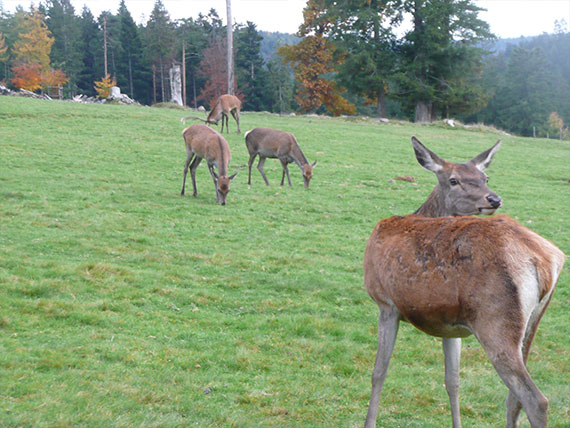The forest as a habitat
A forest represents a self-contained, interwoven system of plants, animals and other living organisms, all of which interact and are interdependent. Forests develop their own climate and create their own special substrate and soil. Climate, soil and the other multifarious biological cycles set this eco system apart from all others.
Besides trees, many flowering plants, fungi, mosses, lichen and ferns can be found. A special feature of a forest is its vertical structure, the soil layer, the herb layer, bushes and shrubs and then trees culminating in the canopy of treetops. The different light intensities at these levels create different living conditions for animals and plants.
In addition to the well-known woodland species, such as the deer, hare, fox and wild boar, the forest is the habitat for many other species of vertebrate: birds, bats, amphibians and reptiles – as well as over 5,000 species of insect, snails, hundreds of unicellular organisms, worms and predatory spiders. The myriads of microbes on the forest floor decompose falling leaves, twigs and other dead wood.
This biological diversity, however, is only found in the near-natural deciduous and mixed forests. In artificial pine-forest plantations, the ground is covered with a thick layer of pine needles which only decomposes very slowly. No worms or snail species are found in or on this very acidic, low-nitrogen surface, and yet, in pine forests, too, all the dead material that falls to the ground is decompose by the various micro-organisms.
Seen globally, forests have the greatest affect on the world’s climate after the oceans. They work as the only effective carbon sink, while simultaneously producing oxygen. The richness of species in the forests is a vast gene pool and when one considers the implications of the possible climate changes we face, this resource may well be of great significance.


